Augusta Savage

(1892-1962)

Who Was Augusta Savage?
Savage was born Augusta Christine Fells on February 29, 1892, in Green Cove Springs, Florida. Part of a large family, she began making art as a child, using the natural clay found in her area. Skipping school at times, she enjoyed sculpting animals and other small figures. But her father, a Methodist minister, didn't approve of this activity and did whatever he could to stop her. Savage once said that her father "almost whipped all the art out of me."
Despite her father's objections, Savage continued to make sculptures. When the family moved to West Palm Beach, Florida, in 1915, she encountered a new challenge: a lack of clay. Savage eventually got some materials from a local potter and created a group of figures that she entered in a local county fair. Her work was well received, winning a prize and along the way the support of the fair's superintendent, George Graham Currie. He encouraged her to study art despite the racism of the day.
Trailblazing Career in Art
After a failed attempt to establish herself as a sculptor in Jacksonville, Florida, Savage moved to New York City in the early 1920s. Although she struggled financially throughout her life, she was admitted to study art at Cooper Union, which did not charge tuition. Before long, the school gave her a scholarship to help with living expenses as well. Savage excelled, finishing her course work in three years instead of the usual four.
While at Cooper Union, she had an experience that would greatly influence her life and work: In 1923, Savage applied to a special summer program to study art in France, but was rejected because of her race. She took the rejection as a call to action and sent letters to the local media about the program selection committee's discriminatory practices. Savage's story made headlines in many newspapers, although it wasn't enough to change the group's decision. One committee member, Herman MacNeil, regretted the ruling and invited Savage to further hone her craft at his Long Island studio.
Savage soon started to make a name for herself as a portrait sculptor. Her works from this time include busts of such prominent African Americans as W. E. B. Du Bois and Marcus Garvey . Savage was considered to be one of the leading artists of the Harlem Renaissance, a preeminent African American literary and artistic movement of the 1920s and '30s.
Eventually, following a series of family crises, Savage got her opportunity to study abroad. She was awarded a Julius Rosenwald fellowship in 1929, based in part on a bust of her nephew entitled Gamin . Savage spent time in Paris, where she exhibited her work at the Grand Palais. She earned a second Rosenwald fellowship to continue her studies for another year, and a separate Carnegie Foundation grant allowed her to travel to other European countries.
Savage returned to the United States while the Great Depression was in full swing. With portrait commissions hard to come by, she began teaching art and established the Savage Studio of Arts and Crafts in 1932. In mid-decade, she became the first Black artist to join what was then known as the National Association of Women Painters and Sculptors.
Savage assisted many burgeoning African American artists, including Jacob Lawrence and Norman Lewis, and lobbied the Works Projects Administration (WPA) to help other young artists find work during this time of financial crisis. She also helped found the Harlem Artists' Guild, which led to a directorial position at the WPA's Harlem Community Center.
World's Fair Commission
Savage was then commissioned to create a sculpture for the 1939 New York World's Fair. Inspired by the words of the poem "Lift Every Voice and Sing," by James Weldon Johnson (who had also previously modeled for Savage), she created The Harp . Standing 16 feet tall, the work reinterpreted the musical instrument to feature 12 singing African American youth in graduated heights as its strings, with the harp's sounding board transformed into an arm and a hand. In the front, a kneeling young man offered music in his hands. Although considered one of her major works, The Harp was destroyed at the end of the fair.
Having lost her directorial position at the Harlem Community Center while working on The Harp , Savage sought to create other art centers in the area. One notable work from this period was The Pugilist (1942) — a confident and defiant figure who appears prepared to take on whatever might come his way — but she grew frustrated over her struggles to reestablish herself. In 1945, she left the city and moved to a farm in Saugerties, New York.
Later Years, Death and Legacy
Augusta Savage spent most of her remaining years in the solitude of small-town life. She taught children in summer camps, dabbled in writing and continued with her art as a hobby.
Savage was married three times: The first was in 1907 to John T. Moore, with whom she had her lone child, Irene. Moore died some years afterward. Around 1915, she married carpenter James Savage, a union that ended in divorce. In 1923, she married Robert Lincoln Poston, an associate of Marcus Garvey's, but was again widowed when he passed away the following year. When Savage became ill late in life, she moved back to New York City to be with her daughter and her family.
Savage died of cancer on March 26, 1962, in New York City. While she was all but forgotten at the time of her death, Savage is remembered today as a great artist, activist and arts educator, serving as an inspiration to the many that she taught, helped and encouraged.
QUICK FACTS
- Name: Augusta Savage
- Birth Year: 1892
- Birth date: February 29, 1892
- Birth State: Florida
- Birth City: Green Cove Springs
- Birth Country: United States
- Gender: Female
- Best Known For: Sculptor Augusta Savage was one of the leading artists of the Harlem Renaissance as well as an influential activist and arts educator.
- Education and Academia
- Astrological Sign: Pisces
- Cooper Union
- Death Year: 1962
- Death date: March 26, 1962
- Death State: New York
- Death City: New York
- Death Country: United States
We strive for accuracy and fairness.If you see something that doesn't look right, contact us !
CITATION INFORMATION
- Article Title: Augusta Savage Biography
- Author: Biography.com Editors
- Website Name: The Biography.com website
- Url: https://www.biography.com/artists/augusta-savage
- Access Date:
- Publisher: A&E; Television Networks
- Last Updated: July 9, 2020
- Original Published Date: April 2, 2014
Black Artists
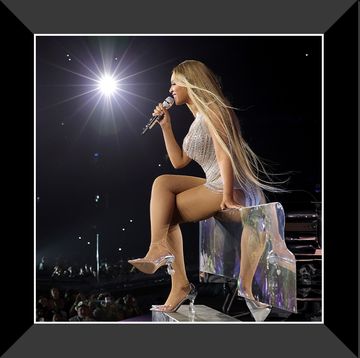
Dave Chappelle

11 Notable Artists from the Harlem Renaissance

Beyoncé's Renaissance Tour Merch is on Amazon

James Van Der Zee
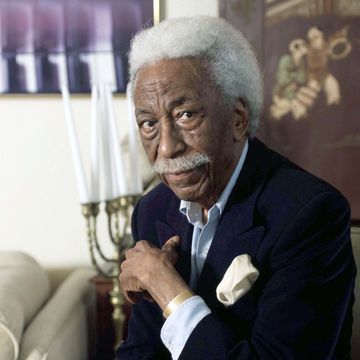
Gordon Parks
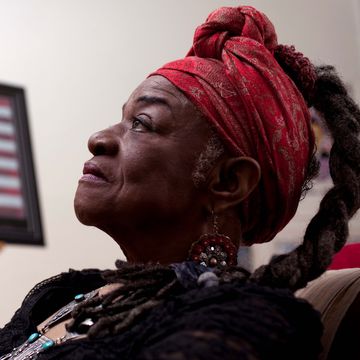
Faith Ringgold
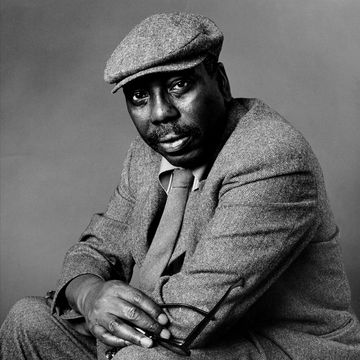
Jacob Lawrence
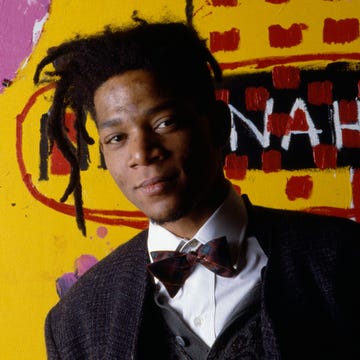
Jean-Michel Basquiat
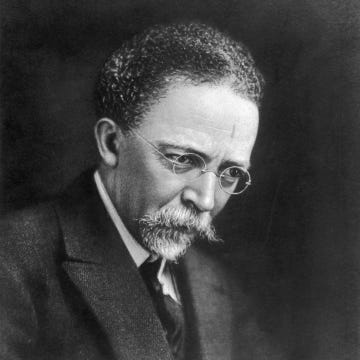
Henry Ossawa Tanner
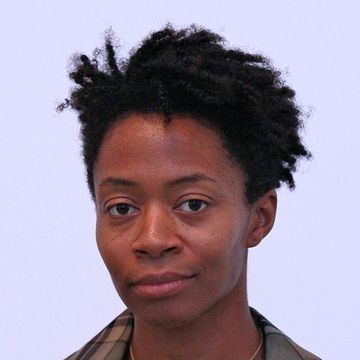
Kara Walker
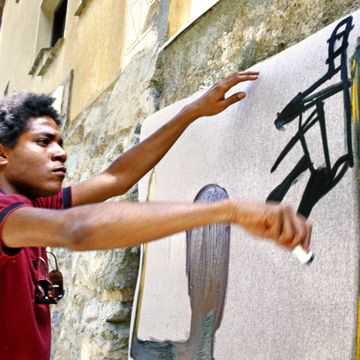
10 Black Visual Artists Who Broke Barriers
EL Education Curriculum
You are here.
- ELA 2019 G7:M3
The Harlem Renaissance
In this module, guiding questions and big ideas, content connections, technology and multimedia, optional: community, experts, fieldwork, service, and extensions, performance task, texts and resources to buy, module-at-a-glance, you are here:.
- ELA 2019 Grade 7
Like what you see?
Order printed materials, teacher guides and more.
How to order
Help us improve!
Tell us how the curriculum is working in your classroom and send us corrections or suggestions for improving it.
Leave feedback
Can we "find fuel for the future in the past"? Poet Nikki Grimes asks this question in her poem "Emergency Measures," the first in her collection One Last Word: Wisdom from the Harlem Renaissance . As Grimes does in her book, students will spend the module pondering the wisdom from works created during the Harlem Renaissance. First, students will explore scenes and songs from a play, poems, and artwork to experience the explosion of creativity and ideas of collaboration and innovation. Then, students examine political artwork and cartoons, informative articles, and short stories to explore the social and political context of the Harlem Renaissance. Finally, students explore the legacy of the Harlem Renaissance, turning back to Nikki Grimes and her collection of poems crafted with lines from Harlem Renaissance poets. Students consider whether they and contemporary writers, singers, and musicians truly can "find fuel for the future in the past."
In Unit 1, students explore collaboration in the Harlem Renaissance, noting how the Harlem Renaissance was an explosion and confluence of art, music, and literature. Students first examine scenes and songs from the Broadway musical Shuffle Along , experiencing this celebratory text that transformed American musical theater and was created through the collaboration of Eubie Blake, Noble Sissle, F. E. Miller, and Aubrey Lyles. Students analyze how the musical and textual techniques in the play affect meaning and develop themes such as love persevering through tough times. Similarly, students explore the thematic connections of triumph over hardships in the poem "Lift Every Voice and Sing" by James Weldon Johnson and the song and sculpture inspired by the text. Students then analyze iconic poems such as "The Negro Speaks of Rivers" by Langston Hughes, "Calling Dreams" and "Hope" by Georgia Douglas Johnson, and Claude McKay's "I Shall Return." In each of these poems, students analyze the structure, figurative language, and themes such as drawing strength from the past and overcoming adversity to fulfill one's dreams. Students conclude their exploration of collaboration and cultural confluence in a collaborative discussion comparing McKay's poem to artwork by Meta Warrick Fuller and Winold Reiss for thematic connections around drawing strength from and longing for home or Africa.
In Unit 2, students explore the social and political context of the Harlem Renaissance by reading short informational texts and examining visual art. Students learn how the Harlem Renaissance occurred during the era of the Great Migration, Jim Crow laws, and the racial violence of post-Civil War America. They then read two short stories, "His Motto" by Lottie Burrell Dixon and "The Boy and the Bayonet" by Paul Laurence Dunbar, analyzing point of view and the interactions between story elements, such as character, plot, and setting. Additionally, students discuss how both stories develop themes about working hard to achieve dreams and how community helps to bring out our best selves. Students continue their exploration of the Harlem Renaissance context by engaging with literary argument writing. Students examine a model literary argument essay then write pair and independent essays, discussing how three pieces of work from the Harlem Renaissance are connected by themes such as looking to the past for strength, collaboration and community to bring out one's best self, and dreams giving life meaning and purpose.
In Unit 3, students explore the contemporary legacy of the Harlem Renaissance by examining short informational and literary texts, visual art, and performances to further develop their sense of how the Harlem Renaissance continues to impact us today. To develop their background knowledge about this legacy, students analyze Nikki Grimes' poem "Emergency Measures," original artwork associated with the poem, and Alvin Ailey American Dance Theater's ballet, "Uptown," which was inspired by the people, places, art, music, and writing of the Harlem Renaissance. Then students study several of Nikki Grimes' poems in conjunction with the poetry of the Harlem Renaissance, learning how Grimes uses lines from poets such as Langston Hughes and Georgia Douglas Johnson to create her own poems which develop themes similar to those of the Harlem Renaissance but in a contemporary context. Students continue their exploration of the legacy of the Harlem Renaissance by creating a museum exhibit, which includes three pieces from the Harlem Renaissance and one contemporary piece that they have studied or created themselves. Students write a curator's statement explaining how the works are connected by theme and create labels discussing the details of structure, language, and theme in each piece. Students practice and revise the presentation of their curator's statements and labels preparing for the Harlem Renaissance museum, in which students contribute to making a better world by sharing these important works with their community.
Notes from the Designer
The texts for the module contain references to sensitive topics such as racism, oppression, racial violence, and life challenges. The poems, short stories, and artwork address these complex issues of racism. The supplemental texts examined throughout the module help to explain the collaboration, socio-political context, and legacy of the Harlem Renaissance. In tackling issues of racism, oppression, racial violence, and life challenges, the texts examined across this module raise issues that may be upsetting, painful, or confusing for students. The design of this module aims to support students as they process sensitive or challenging passages. Across lessons, teaching notes call attention to specific passages that may be especially troubling for students and offer suggestions for helping students process the content of these passages with strength and compassion. Instructional decisions throughout the module, too, equip students with the literacy skills necessary to interpret the writers' choices and their development of themes around hope and perseverance.
How does collaboration influence an artistic renaissance?
- Innovation occurs through collaboration and community.
- The academic mindset of belonging is a critical aspect to creating a common identity and strong community during the Harlem Renaissance.
- There are common themes, practices, and structures across the art, music, and literature of the Harlem Renaissance.
What are some of the historical factors surrounding and contributing to the Harlem Renaissance?
- Some societal factors that contributed to the movement and its art are the Great Migration, Jim Crow laws, and the racial violence of post-Civil War America. This migration, struggle, and oppression create urgency and frustration, out of which comes an expression of culture and identity. Out of the migration came a new freedom to create.
What are some of the lasting legacies of the Harlem Renaissance?
- The Harlem Renaissance has contributed to contemporary art, music, literature, and politics.
This module is designed to address English Language Arts standards and to be taught during the literacy block. But the module intentionally incorporates Social Studies content that may align to additional teaching during other parts of the day. These intentional connections are described below.
College, Career, and Civic Life (C3) Framework for Social Studies State Standards
- D2.Civ.14.6-8. Compare historical and contemporary means of changing societies, and promoting the common good.
- D2.His.4.6-8. Analyze multiple factors that influenced the perspectives of people during different historical eras.
- D2.His.14.6-8. Explain multiple causes and effects of events and developments in the past.
Devices to access the internet: To enable students to listen to or view audio, video, and artwork collections. Analyze and present music, visual, and performance art.
Laminators and computers : To make professional museum signage. Create signs for the performance task museum.
Devices to record presentations: T o enable teachers and students to review presentations for formative and summative assessments. Record presentations for learning and assessment purposes.
Refer to each Unit Overview for more details, including information about what to prepare in advance.
- Consider arranging meetings either with the experts in the fields listed below, or other artists, musicians, or writers. Also, begin planning for the Harlem Renaissance Museum performance task early, so that students can invite community members such as the experts who have visited class, friends, family members, and other classes or schools.
- The students explore contemporary art, music, dance, and literature inspired by the Harlem Renaissance. Consider contacting local art and music universities, studios, and authors to arrange meetings with those who have also been inspired by the Harlem Renaissance. Consider using the artist biographies from Nikki Grimes' One Last Word as a starting point.
- Students also create a museum exhibit and Harlem Renaissance museum collection. Consider reaching out to local museum directors, curators, and other docents to share their experience writing statements and labels as well as setting up exhibits.
- Consider visiting sites of interest, or the organizations associated with the experts above to meet with artists who have been inspired by the Harlem Renaissance or to see exhibits of Harlem Renaissance works at museums or libraries.
- Throughout the module, students are provided with extension opportunities in the context of the classroom, but students eager to expand their engagement with the topic can record videos of their interviews with community members and work on "mini documentaries" or write stories of the people they interview in order to share with larger audiences.
Each unit file includes supporting materials for teachers and students, including guidance for supporting English language learners throughout this unit.
ELA 2019 G7:M3:U1
Collaboration in the harlem renaissance, ela 2019 g7:m3:u2, the context of the harlem renaissance, ela 2019 g7:m3:u3, the legacy of the harlem renaissance.
Each unit in the 6-8 Language Arts Curriculum has two standards-based assessments built in, one mid-unit assessment and one end of unit assessment. The module concludes with a performance task at the end of Unit 3 to synthesize students' understanding of what they accomplished through supported, standards-based writing.
Harlem Renaissance Museum Collection
Throughout the module, students read poems and stories, listen to songs, and view visual and performing art from the Harlem Renaissance. For the performance task, students will share these works with an audience beyond their classroom, in a Harlem Renaissance Museum. Sharing this museum with others is important because these are seminal works and yet there are so few middle school resources on the Harlem Renaissance. In Unit 3, students curate a set of texts, songs, and artwork connected by a theme from the Harlem Renaissance. Additionally, they curate a contemporary piece that they either found or made themselves. Together with their classmates, students will present their set to a wider audience in a Harlem Renaissance Museum. Both their written and oral presentation of their curator's statement, labels, and the works themselves are part of their museum exhibit.
Texts and resources that need to be procured. Please download the Required Trade Books and Resources Procurement List for procurement guidance.
Each module is approximately 6-8 weeks of instruction, broken into 3 units. The Module-at-a-Glance charts, available on the grade level landing pages, provide a big picture view of the module, breaking down the module into a week-by-week outline. It shows how the module unfolds, the focus of each week of instruction, and where the six assessments and the performance task occur.
View the module-at-a-glance chart
Copyright © 2013-2024 by EL Education, New York, NY.
Get updates about our new K-5 curriculum as new materials and tools debut.
Help us improve our curriculum..
Tell us what’s going well, share your concerns and feedback.
Terms of use . To learn more about EL Education, visit eleducation.org

Brave New World
Aldous huxley, ask litcharts ai: the answer to your questions, john (the savage) quotes in brave new world.
"O brave new world," he repeated. "O brave new world that has such people in it. Let's start at once."
“Put your arms around me...Hug me till you drug me, honey...Kiss me till I'm in a coma. Hug me honey, snuggly...”
"Free, free!" the Savage shouted, and with one hand continued to throw the soma into the area while, with the other, he punched the indistinguishable faces of his assailants. "Free!" And suddenly there was Helmholtz at his side–"Good old Helmholtz!"—also punching—"Men at last!"—and in the interval also throwing the poison out by handfuls through the open window. "Yes, men! men!" and there was no more poison left. He picked up the cash-box and showed them its black emptiness. "You're free!"
Howling, the Deltas charged with a redoubled fury.
“The world's stable now. People are happy; they get what they want, and they never want what they can't get... And if anything should go wrong, there's soma.”
You've got to choose between happiness and what people used to call high art.
“Actual happiness always looks pretty squalid in comparison with the over-compensations for misery. And, of course, stability isn't nearly so spectacular as instability. And being contented has none of the glamour of a good fight against misfortune, none of the picturesqueness of a struggle with temptation, or a fatal overthrow by passion or doubt. Happiness is never grand.”
“There's always soma to calm your anger, to reconcile you to your enemies, to make you patient and long-suffering. In the past you could only accomplish these things by making a great effort and after years of hard moral training. Now, you swallow two or three half-gramme tablets, and there you are. Anybody can be virtuous now. You can carry at least half your morality about in a bottle. Christianity without tears—that's what soma is.”
"In fact,” said Mustapha Mond, “you're claiming the right to be unhappy.”
“All right then,” said the Savage defiantly, “I'm claiming the right to be unhappy.”

Augusta Savage Biography Research Graphic Organizer

Also included in
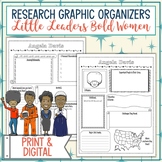
Description
This biography graphic organizer is a perfect way to ensure your students are keeping their information organized and focusing on the most important aspects of the person they're studying. This activity is great for biography projects and can easily serve as a note-taking tool for an essay or presentation. It can also serve as the biography project itself! This graphic organizer is perfect for integrating literacy into other subjects, especially social studies, and it would make an awesome Black History Month or Women's History Month addition! Students will benefit from the experience of learning about these diverse figures because the organizers allow students to go beyond reading to really interact with the chosen text as they determine which facts are relevant.
This graphic organizer has space for the following information:
•Important people in their lives
•Childhood (how and when did they grow up?)
•Education & career
•Challenges they faced
•Major life events (includes timeline component)
•Where are/were they from? (includes mapping component)
•Accomplishments
•Personal characteristics
•What lesson(s) can you learn from them?
•What set them apart from others who lived during their time
•Other fact(s)
•Glossary/Words to Know
•Resources where you can learn more
Click here to follow me and be the first to hear about new products, sales, and special promotions. For additional resources, be sure to check out my store !
Katie Loftin
Dr. Loftin's Learning Emporium
Questions & Answers
Dr loftin's learning emporium.
- We're hiring
- Help & FAQ
- Privacy policy
- Student privacy
- Terms of service
- Tell us what you think

Membership log in
- Seasonal Activities
- Teacher Tips
7 Key Reading Skills to Support Biographies
Listen to the full episode to hear key reading skills to support biographies:.
I hope you’ve been enjoying this month’s biography theme. The last two episodes I gave tips for introducing biographies to your students and tips for using mentor texts. At this point your students should be familiar with the genre, which leads me to today’s episode. I will be sharing how to use biographies to focus on key reading skills that go hand in hand with this genre.
These reading skills really lend themselves beautifully to this genre and I’m going to tell you why. Although I could think of even more, today I will specifically be sharing seven key reading skills to target with biographies. The reason I want to talk about this is because you don’t have to always grab that fiction text when you want to introduce certain skills!
Biographies are factual stories that are typically arranged from the person’s childhood through their adult years. There is really no better genre to use when teaching sequencing. Once you get to thinking about how biographies are written and the information they contain, the more sense it will make as to why you should take a break from fiction texts when working on these reading skills.
The seven reading skills I talk about in this episode are super important for literacy. That’s not all though! These skills I targeted are also ones that are prioritized during test prep. Now that test prep is among us, it’s the perfect time to take the strategies from this episode and put them into practice.
Biography is the perfect genre to work on so many different major reading skills that your students will need to learn to become strong readers. So put that fiction story down and let me know who you are teaching your students about this week!
In this episode on 7 key reading skills, I share:
- 7 reading skills that can be easily practiced through biographies
- Tips for incorporating these reading skills into biography exploration
- How biographies can be used to have student expand their answers
- Why biographies are beneficial for test prep
Related Resources:
- Free Biography Templates
- Easy Reader Biographies
- Black History Biography Activity Bundle
- Episode 69, 9 Quick Mini-Lesson Ideas for Biography Exploration
- Episode 68, Introducing and Teaching the Biography Genre
Connect with Megan:
- Check out my TpT Store
- Subscribe to my E-mail list
- Instagram Posts
- Facebook Posts
- Watch my YouTube channel
About The Literacy Dive Podcast:
Do you find yourself seeking new ideas when it comes to literacy instruction in elementary classrooms? The Literacy Dive Podcast was created to offer actionable steps and to share information for teachers, like you, who are always looking to improve their craft! ELA is our jam and we are excited to dive into all things reading and writing with you!
Your host, Megan Polk, is the creator and owner behind The Literacy Dive and loves to support students and their teachers with curriculum, literacy instruction, best practices, and engaging literacy activities.
Dive in with us every Monday for a new episode from Megan! She, and her guests, will chat about various literacy topics and will bring you tips and tricks that can easily be implemented in your classrooms. You can tune in wherever you get your podcasts! Listen to The Literacy Dive Podcast on platforms like Apple, Spotify, Stitcher, Google, and more! If you find value from listening to this podcast, please rate this show, leave a review, and follow!
You can tune in wherever you get your podcasts! Listen to The Literacy Dive Podcast on platforms like Apple , Spotify , Stitcher , Google , and more! If you find value from listening to this podcast, please rate this show, leave a review, and follow!
- Read more about: Podcast
You might also like...

Interventions for Environmental Factors That Affect Reading Comprehension

Interventions for Cognitive Factors That Affect Reading Comprehension

Interventions for Fundamental Factors That Affect Reading Comprehension

Hey, I'm Megan!
I am a literacy specialist and curriculum designer who loves sharing tips and ideas to help students thrive in literacy! It brings me joy to await those a-ha moments and to see light bulbs turn on!
I have a huge passion for reading and writing and love to co-mingle the two any chance I get! You can expect to learn new strategies and ways to keep your students engaged during your literacy block! I am so glad you’re here!
Find it Fast
Browse the blog.
- Digital Activities

VOCABULARY WRITING PROMPTS
Ready to merge vocabulary AND writing TOGETHER?!! Grab this sample of high-impact writing prompts that will give meaningful practice with both important skills! Perfect for 2nd-6th grade teachers!
Meet the Author
Hey, I’m Megan! I am a lover of ALL things literacy and I create engaging, hands-on literacy resources that keep students interested and involved in reading and writing!
You’re in the right place if you are ready to enhance your literacy instruction by providing your students with high-quality experiences to help foster independence and growth!

Find What You Need
Privacy overview.
Skip to content Skip to navigation

- English Studies
- Writing and Composition
- Liberal Studies / Core Texts
- Communications
- The Broadview Anthology of British Literature
- The Broadview Anthology of American Literature
- Editions: Chronological List
- The Broadview British Bookshelf: A Digital Library
- Merchandise
- General Information
- Inclusive Access Adoptions
- Broadview Enhanced
- Custom Texts
- Customer Service
- Publisher’s Representatives
- Publishing with Broadview
- Permissions and Accessibility

- Written by: Samuel Johnson
- Edited by: Nicholas Seager ; Lance Wilcox
- Publication Date: June 2, 2016
- ISBN: 9781554811557 / 1554811554
- 272 pages; 5½" x 8½"

Broadview eBooks are available on a variety of platforms. To learn more, please visit our eBook information page .
Note on pricing.
Examination copy policy
Availability: Worldwide
The Life of Mr Richard Savage
- Description
- Authors/Editors
The Life of Mr Richard Savage was the first important book by a then-unknown Grub Street hack, Samuel Johnson. Richard Savage (1697—1743) was a poet, playwright, and satirist who claimed to be the illegitimate son of a late earl and to have been denied his inheritance and viciously persecuted by his mother. He was urbane, charming, a brilliant conversationalist, but also irresponsible and impulsive. His role in a tavern brawl almost led him to the gallows, though his life was saved by an eleventh-hour pardon by the King. Over time he attracted many supporters, practically all of whom he managed to alienate by the time of his death in a debtors’ prison in Bristol. Johnson, who had been friends with Savage for a little over a year, drew on published documents and his own memories of Savage to produce one of the first great English biographies.
The edition is supplemented by other writings by Johnson, a selection of Savage’s prose and verse, contemporary and posthumous responses to Savage and to Johnson’s biography, and selections by Johnson’s first two major biographers, Sir John Hawkins and James Boswell.
For an excerpt from the appendices of The Life of Mr Richard Savage , please see our blog post: From James Boswell, The Life of Samuel Johnson (1791) .
“Samuel Johnson’s Life of Mr Richard Savage is one of the greatest narratives in any genre of the British eighteenth century. Johnson’s biography of his friend, a minor poet and hack writer who represented himself as the illegitimate son of a nobleman and died in a Bristol jail, is at once sympathetic and satiric. Broadview’s edition, freshly edited and annotated by Nicholas Seager and Lance Wilcox, should be welcomed by students and general readers alike. Their introduction is lively, informed, and concise. The narrative itself is supplemented by relevant writings of Johnson and Savage, excerpts establishing Savage’s reputation, and a range of other useful aids.” — Robert Folkenflik, University of California, Irvine
“This deeply informed edition of The Life of Mr Richard Savage is essential reading for students both of Samuel Johnson and of biography. The literary criticism, editorial practice, reception history, and wide-ranging reclamation of contexts are exemplary. The edition also allows us to read Savage’s poetry, which Johnson included in his footnotes but which Seager and Wilcox prudently place at the back of their book. They have joined Samuel Johnson to produce an admirable Savage that should find readers from the classroom to the boardroom.” — Howard Weinbrot, University of Wisconsin, Madison
“Like all Broadview editions, this is a first-rate version of Johnson’s work. The introduction is a masterpiece of information. It explains who Johnson was when he took on this project, and why he would write such a work about his friend. Even more exciting are the appendices, devoted to such topics as related writings by Johnson; some of Savage’s writings; Savage’s contemporary reputation; Savage’s posthumous reputation; and the lives of Johnson. A more useful text for the classroom could not be imagined.” — George E. Haggerty, Studies in English Literature 1500-1900
“This comprehensively researched edition breaks new ground in what we know of Savage, adds abundant dimensions to the study of his life and work, and recasts The Life of Mr Richard Savage as an ideal teaching text in the area of eighteenth-century literature.” — Joe Lines The Modern Language Review
Acknowledgements Introduction A Note on Money Richard Savage and Samuel Johnson: A Brief Chronology A Note on the Text
An Account of the Life of Mr Richard Savage, Son of the Earl Rivers
Johnson’s extended footnotes to the Life
Appendix A: Errors of Fact in Johnson’s Life of Savage
Appendix B: Related Writings by Johnson
- London (1738)
- The Rambler no. 60 (13 October 1750)
- From The Rambler no. 145 (6 August 1751)
- The Idler no. 84 (24 November 1759)
- “The Life of Collins” (1781)
Appendix C: Richard Savage, Satirist
- The Bastard (1728)
- “Fulvia” (c. 1728)
- From An Author to Be Let (1729)
- From The Progress of a Divine (1735)
Appendix D: Savage’s Contemporary Reputation
- From Eliza Haywood, Memoirs of a Certain Island Adjacent to the Kingdom of Utopia (1724)
- From The Life of Mr. Richard Savage [The “Newgate Biography”] (1727)
- From Nature in Perfection (1728)
- From William Saunders, “On Richard Savage, Esq” (1742)
Appendix E: Savage’s Posthumous Reputation
- Denis Diderot, Review of L’Histoire de Savage (1771)
- Richard Brinsley Sheridan, Prologue to Sir Thomas Overbury (1777)
- “On Richard Savage, the Poet” (1790)
Appendix F: Johnson’s Biographers
- From Sir John Hawkins, Life of Samuel Johnson (1787)
- From James Boswell, Life of Samuel Johnson (1791)
Select Bibliography
Nicholas Seager is Senior Lecturer in English at Keele University.
Lance Wilcox is Professor of English at Elmhurst College.
Related products


Fantomina and Other Works
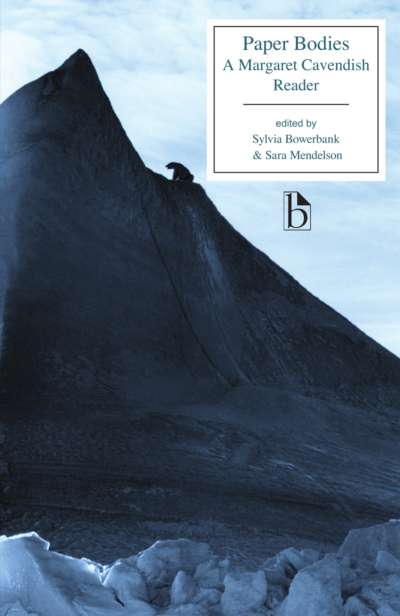
Paper Bodies

Anti-Pamela and Shamela
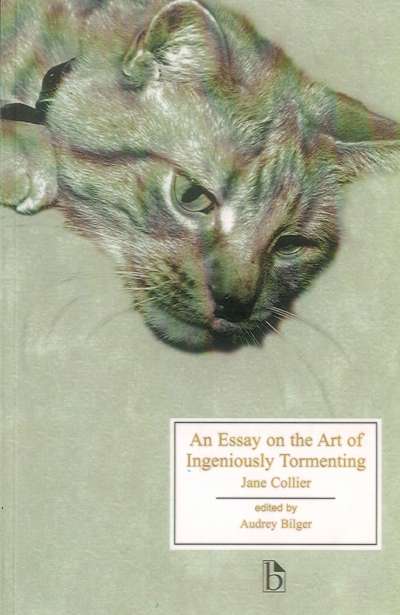
An Essay on the Art of Ingeniously Tormenting
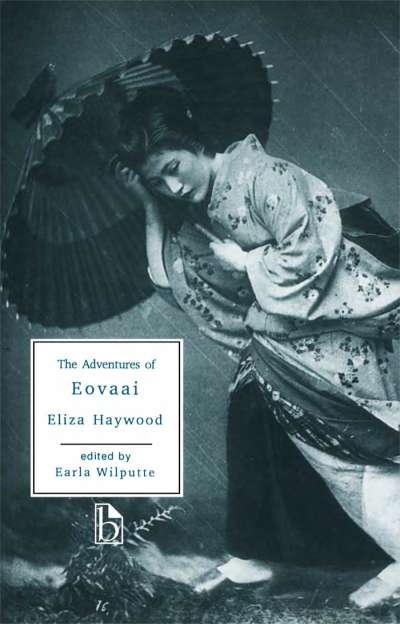
The Adventures of Eovaai

Sociable Letters
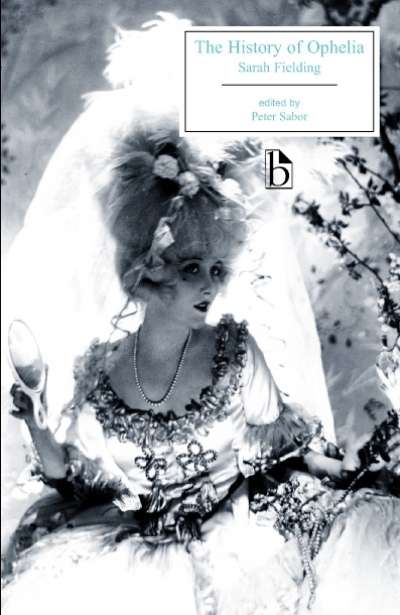
The History of Ophelia
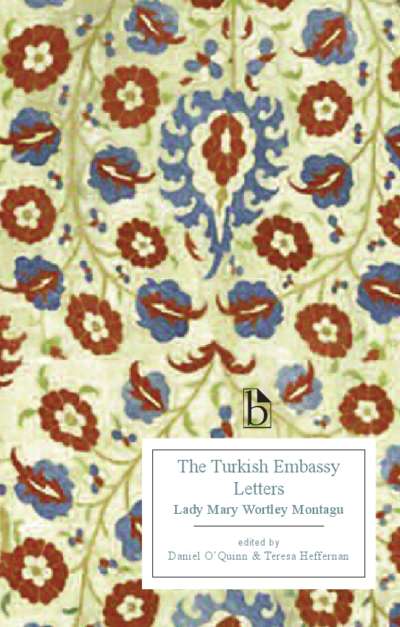
The Turkish Embassy Letters
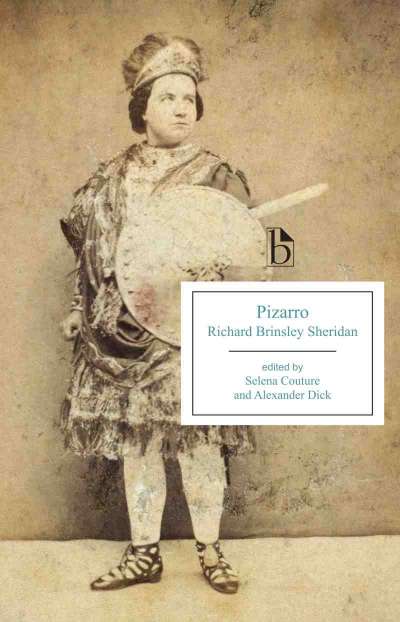
Travels through France and Italy

Thomas Clarkson and Ottobah Cugoano

A Known Scribbler
Search products.
- Introduction to Poetry (10)
- Introduction to Short Fiction (7)
- Introduction to the Novel (17)
- Introduction to Drama (10)
- Introduction to the Essay (6)
- The Broadview Anthology of American Literature (5)
- American Literature before 1865 (46)
- American Literature after 1865 (40)
- 20th Century American Literature (19)
- Literature of the South (4)
- American Popular Fiction (14)
- Literary Realism / Naturalism (9)
- American Novels (34)
- Transcendentalism (3)
- American Poetry (5)
- African American Literature (15)
- Literature of the West (3)
- New England Literature (7)
- Race in American Literature (27)
- Depictions of Native Americans (8)
- American Prose (13)
- Asian American Literature (2)
- Broadview Anthology of British Literature (20)
- Arthurian Literature (8)
- Medieval Survey (6)
- Old English (9)
- Middle English (10)
- Medieval Romance (3)
- Chaucer (3)
- Medieval Drama (4)
- Medieval Prose (7)
- Medieval Poetry (16)
- Renaissance and early 17th Century Survey (11)
- Renaissance and early 17th Century Prose (8)
- Renaissance and early 17th Century Drama (25)
- 16th Century and the Tudor Period (9)
- Shakespeare (14)
- Renaissance and early 17th Century Poetry (5)
- Renaissance and early 17th Century Novel (1)
- Restoration and 18th Century Survey (6)
- Restoration and 18th Century Drama (15)
- Restoration and 18th Century Prose (18)
- Restoration and 18th Century Novel (43)
- Restoration and 18th Century Poetry (4)
- Romantic Survey (6)
- Romantic Drama (5)
- Romantic Prose (18)
- Romantic Poetry (15)
- Jane Austen (11)
- Romantic Novel (52)
- Victorian Survey (7)
- Victorian Prose (24)
- Victorian Poetry (11)
- Victorian Drama (8)
- New Woman Literature (18)
- Fin de siècle Literature (20)
- Victorian Crime Fiction (10)
- Victorian Novel (84)
- 20th Century Survey (8)
- Early 20th Century (21)
- Late 20th Century (2)
- 20th Century Prose (7)
- 20th Century Poetry (2)
- 20th Century Drama (4)
- 20th Century Novel (16)
- British Literature Survey (30)
- Canadian Literature (27)
- Indigenous North American Literature (9)
- Works in Translation (46)
- Scottish Literature (13)
- Irish Literature (15)
- Australasian Literature (2)
- Transatlantic Literature (29)
- European Literature (20)
- African Literature (4)
- Colonial and Post-Colonial Literature (38)
- Life Writing (23)
- Gothic and Horror (34)
- Travel Literature (13)
- Literature of the Suffrage Movement (6)
- Mystery, Detective, and Crime Fiction (19)
- Science Fiction and Fantasy (23)
- Utopian and Dystopian Literature (17)
- Jewish Literature / Jewish Studies (12)
- LGBTQ+ Literature (14)
- Medicine and Illness (7)
- War Literature (18)
- Disability Literature (9)
- History of Sexuality (24)
- Feminist and Protofeminist Literature (89)
- Animals and Literature (18)
- Historical Fiction (12)
- Popular Culture (3)
- Race in Literature (51)
- Humour and Satire (29)
- Coming of Age and Childhood (22)
- Sensation Literature (11)
- Politics and Literature (23)
- Philosophy, Psychology, and Literature (17)
- Education (5)
- Epistolary Writing (22)
- Spy Fiction (4)
- Uncategorized (4)
- Fairy Tales and Folklore (5)
- 18th Century Children's Literature (2)
- 19th Century Children's Literature (9)
- 20th Century Children's Literature (2)
- Children's Literature Theoretical Approaches (6)
- Textbooks/Anthologies (16)
- Book History and Print Culture (12)
- History of English (7)
- Literature by Women (202)
- Creative Writing (7)
- Writing About Literature (4)
- Handbooks and Writing Guides (24)
- Composition Readers (14)
- Writing in the Disciplines (7)
- Writing About Literature (5)
- Academic Writing (9)
- Grammar and Style (12)
- Business and Technical Communication (8)
- Rhetoric and Argument (15)
- Developmental and Stretch Composition (4)
- Writing Careers (1)
- Introduction to Philosophy Anthologies (8)
- Introduction to Philosophy Historical Editions (14)
- Introduction to Philosophy Authored Texts (13)
- Epistemology and Metaphysics Focus (4)
- Ethics and Political Philosophy Focus (3)
- Ancient and Medieval (7)
- Early Modern (26)
- 19th and 20th Century (13)
- Philosophical Methods and Writing (6)
- Critical Thinking (14)
- Introduction to Formal Logic (8)
- Intermediate / Advanced Logic (3)
- Inductive / Scientific Reasoning (3)
- Epistemology (9)
- Metaphysics (12)
- Philosophy of Science (9)
- Philosophy of Language (5)
- Philosophy of Mind (6)
- Introduction to Ethics (13)
- Ethical Theory (9)
- Introduction to Ethical Issues (10)
- Environmental Ethics (6)
- Topics in Ethics (22)
- Business and Professional Ethics (10)
- Biomedical Ethics (10)
- War and Peace Studies (6)
- Political Philosophy Anthologies (13)
- Political Philosophy Historical Editions (27)
- Feminist Philosophy (2)
- Topics in Social Philosophy (16)
- Philosophy and Race (3)
- Philosophy of Law (3)
- Art and Aesthetics (7)
- Human Nature (5)
- Happiness (3)
- Philosophy of Sport (2)
- Love, Sexuality, and Gender (3)
- Philosophy of Religion (7)
- Non-Western Philosophy (5)
- Continental Philosophy and Existentialism (6)
- Cultural Studies (5)
- Communication Theory (4)
- Business Communication (6)
- Print Culture (4)
- Journalism (1)
- Argument and Critical Thinking (4)
- Audio Communications (1)
- The Broadview Sources Series (11)
- American History (24)
- British History (37)
- European History (33)
- Medieval History (5)
- Modern Intellectual History (32)
- History of Race and Empire (21)
- History of Revolutions (13)
- History of Science (7)
- Industrial Revolution (9)
- Women's History (13)
- Travel Writing (2)
- Medical History (2)
- Environmental History (2)
- Politics Anthologies (8)
- Political Theory – Historical Editions (27)
- Topics in Politics (8)
- Liberal Studies / Core Texts (58)
- Medieval Period Editions (29)
- Renaissance and the early 17th Century Editions (41)
- Restoration and the 18th Century Editions (67)
- Romantic Period Editions (80)
- Victorian Period Editions (124)
- 20th Century British Editions (32)
- American Editions (88)
- Canadian and World Literature Editions (28)
- Works in Translation (56)
- Poetry Editions (37)
- Drama Editions (58)
- Philosophy Editions (41)
- Press Forward (2)
- Course Packages (16)
- Gift Packages (8)
- Standard Packages (25)
- Passcodes (28)
- Merchandise (5)
Modal title
- Publisher’s Representatives
- Environmental & Social Commitments
- Broadview Press Blog
Customer Resources
- Examination and Desk Copies
- Privacy Policy
- Terms & Conditions
- Companion Sites
Ordering Information
- Academic and Textbook Sales
- Trade and Library Sales
- Return Information
- Shipping Information
Subscribe To Our Newsletter
You can unsubscribe at any time.
About our newsletter .
Hear the latest from Broadview!
Sign up for updates on new titles in your teaching areas and other news from the press. Messages are sent every other month or so. You can unsubscribe at any time .

Robert Savage
Professor, Dean
Ph.D. Research (Experimental Psychology) - University of London, Institute of Education, United Kingdom; M.Sc. Professional Educational Psychology - University of London, Institute of Education, United Kingdon; M.Sc. Research Degree in Experimental Psychology - Cambridge University, St John’s College, United Kingdom; Post-graduate Certificate in Education - Cambridge University, Homerton College, United Kingdom; B.A. Honours Degree in Experimental Psychology - Oxford University, Worcester College, United Kingdom
Location(s) / Contact Info:
242, Winters College - WC Keele Campus Phone: 416-736-5667
Email: [email protected]
I am Dean of the Faculty of Education at York University. From 2017-2021 I was Professor and Head of the Department of Psychology and Human Development at University College London. Until 2017 I was William Dawson Scholar at McGill University, Montreal, Canada. I have published nearly 100 research articles in international peer reviewed journals exploring children’s early reading and spelling including over 30 reading intervention studies on 4 continents (North America, United Kingdom, Hong Kong and Australia). I am particularly interested in preventing early reading and spelling problems, often using technology. I am a school-based psychologist and classroom teacher by training, and as such maintain an interest in making schools effective learning places for all children.
Faculty & School/Dept
- Faculty of Education -
Selected Publications
- McBreen, M., & Savage, R. S. (2021). The impact of motivational reading instruction on the reading achievement and motivation of elementary school students: A systematic review and meta-analysis. Educational Psychology Review .
- Georgiou, G., Savage, R., Dunn, K., Bowers, P., & Parrila, R. (2021). Examining the effects of Structured Word Inquiry on the reading and spelling skills of persistently poor grade 3 readers. Journal of Research in Reading (special issue on morphological development), 44 , 131-153.
- Savage, R. S (2021). Teaching children to read words. In Snowling, M. J., Hulme, C., & Nation, K. (Eds.), The Science of Reading: A Handbook. (Second ed.).
- Wood, K., Wood, E., Gottardo, A., Archer, K., Robert Savage, R., & Piquette, N. (2021). Workshop training to facilitate parent-child instructional opportunities for reading and social development with kindergarten students. Journal of Research in Childhood Education, 35 , 438-457.
- Côté, M-F., Savage, R. S., & Petscher, Y. (2021). Cross-linguistic transfer of reading between English and French among Grade 1 students attending French Immersion programs. Scientific Studies of Reading, 25 , 383-396.
- McBreen, M., & Savage, R. S. (2021). The impact of a cognitive and motivational reading intervention on the reading achievement and motivation for students at-risk for reading difficulties. Learning Disability Quarterly .
- Fletcher, J. M., Savage, R. S., & Vaughn, S. (2021). A commentary on Bowers (2020) and the role of phonics instruction in reading. Educational Psychology Review .
- Savage, R. S., Georgiou, G., Parrila, R., Maiorino, K., Dunn, K., & Burgos, G. (2020). The effects of teaching complex grapheme-phoneme correspondences: Evidence from a dual site cluster trial with at-risk grade 2 students. Scientific Studies of Reading, 24 , 321-337.
- Savage, R. S. (2020). The Simple View of Reading: A scientific framework for effective teaching. The Reading League Journal, 1 , 41-45.
- Yeung, S., & Savage, R.S. (2020). Teaching grapheme - phoneme correspondences using a Direct Mapping approach for at-risk second language learners: A randomized control trial. Journal of Learning Disabilities, 53 , 131-144.
- Wright, J., Savage, R. S., (+36 others) (2019). Act early: A city co-laboratory approach to early promotion of health and well-being. Welcome Open Research, 4 , 1-12.
- Savage, R. S., Georgiou, G., Parrila, R., Côté, M-F., Maiorino, K. & Dunn, K. (2019). Interventions to improve the literacy skills of children at-risk of dyslexia. In McCardle, P., & Compton, D. (Eds.), Dyslexia 101: Revisiting Etiology, Diagnosis, Treatment and Policy - The Extraordinary Brain Series . Baltimore, Maryland: Brookes
- Savage, R.S. (2019). Literacy, basic processes, and interventions for struggling readers Oxford Research Encyclopedia of Education . Oxford University Press
- Savage, R. S., & Pace, A. (2019). Similarities and dissimilarities in the teaching of English and French in dual language instructional settings. International Journal of Bilingualism and Bilingual Education, 23 , 872-887.
- McNally, S., Valenzuela, J-R., Savage, R. S., Rolfe, H.M., Vousden, J., Wood, C., & Johnson, H (2019). ABRACADABRA, teaching assistants, computers and classroom management: Evidence from a Randomised Control Trial in England. Labour Economics, 58 , 21-36.
- Savage, R. S., & Pace, A. (2019). Linguistic and reading comprehension in simultaneous dual language instruction: Evidence against unitary constructs. International Journal of Bilingualism, 23 , 118-137.
- Savage, R. S., Georgiou, G., Parrila, R., Maiorino, K. M., Dunn, K., & Burgos, J. (2019). Promising new interventions for children who are at-risk of dyslexia. Dyslexia Review, 29 , 8-11.
- Savage, R. S., & Côté, M-F. (2019). The teaching of reading and writing in second and multi-language contexts. In Spaull, N., and John P. Comings, J. P. (Eds.), Improving early literacy outcomes: Curriculum, teaching, and assessment (pp. 81-100). Leiden: Brill and UNESCO IBE
- Wood, E., Petkovski, M., De Pasquale, D., Gottardo, A., Evans, M. A., & Savage, R. S. (2018). Parent scaffolding of young children when engaged with mobile technology. In Tarasuik, J., Strouse, G., Kaufman, J. (Ed.), Touch screen tablets: Touching children's lives (pp. 262-271). Lausanne: Frontiers Media
- Basma, B., & Savage, R.S (2018). Teacher professional development and student literacy growth: A systematic review and meta-analysis. Educational Psychology Review, 30 , 457-481.
Selected Presentations
- Savage, R.S. (2021, June). Flexible Phonics: A new approach to supporting children’s reading . Presented at: International Literacy Centre Seminar. Institute of Education, University of London
- Savage, R.S. (2021, May). Teaching children to read: Phonology, morphology, and ‘mental flexibility’ as drivers of measurable change . Presented at: Psychology and Human Development Research Seminar Series. Institute of Education, University of London
- Savage, R.S. (2021, April). Intervening to support poor readers in year 3: The role of morphology instruction . Presented at: Reading Recovery National Conference, Institute of Education, University of London
- Savage, R.S. (2021, February). Teaching children to read: Phonology, morphology, and ‘mental flexibility’ as drivers of measurable change . Presented at: Child Development and Learning Seminar Series – Faculty of Education, Oxford University
- Savage, R.S. (2020, September). Understanding our spelling and reading system: Ways to help children who find this difficult . Presented at: Sutton Dyslexia Association
- Novel recent approaches to early reading intervention (2020, March). Savage, R.S. . Presented at: Helen Arkell Dyslexia Association
- Savage, R.S. (2019, October). Recent evidence on preventative early interventions and some reflections on effective later interventions . Presented at: Scottish Dyslexia Association Glasgow
- Savage, R.S. (2019, September). Optimizing the teaching of early reading: The role of phonology, letter-sounds, sight words, and strategies for learning . Presented at: 1st Annual JP Das Conference: From research to practice. University of Alberta / Edmonton Public School Board. Edmonton, Alberta
- Savage, R.S. (2019, June). New ways to support struggling readers: Evidence from recent interventions . Presented at: The Dyslexia Guild
- Savage, R.S. (2019, May). Ensuring Impact in Research: The case of reading intervention. E Tipu e Rea . Presented at: A Better Start conference. Auckland New Zealand
- Savage, R.S. (2019, April). Panel Event: How can we make UCL education more inclusive? . Presented at: University College London Institute of Education. Education Conference
Research Projects
Morphological awareness and reading among Chinese ESL children: A randomised control trial
Role: Co-Investigator
Amount funded: $113,041
Year Funded: 2021
Duration: 3
Funded by: Social Sciences and Humanities Research Council (SSHRC)
Bridging the reading gap caused by Covid-19: A collaborative, evidence-based approach
Amount funded: $100,117
Duration: 2
Funded by: TAlberta Research Network
Australian Research Council Centre of Excellence for children and families over the life course
Role: Co-Principal Investigator
Amount funded: $29, 508,567.
Duration: 8
Funded by: Australian Research Council
Scaling up Direct Mapping and Set-for-Variability interventions in England
Role: Principal Investigator
Amount funded: $691,400
Year Funded: 2019
Funded by: The Education Endowment Foundation (UK)
Literacy Instruction for Children with Autism
Amount funded: $250,000
Funded by: Australian Research Council Linkage Grant
Executive functioning in reading comprehension in Chinese with and without dialect
Amount funded: $113,811
Funded by: Other...
Contrasting the effects of two teacher-delivered reading interventions to grade 1 poor readers
Amount funded: $116,000
Funded by: University of Alberta and Edmonton Catholic and Fort Vermilion School Boards
Families and Schools in unison: Teaching all children to read
Amount funded: $200,000
Year Funded: 2013
Funded by: Max Bell Foundation
Responding to intervention: Schools where all children are taught to read
Amount funded: $350,000
Year Funded: 2012
Duration: 6
Similarities in Teaching English and French Second Language (STEF)
Amount funded: $185,000
Year Funded: 2010
Duration: 5
Funded by: Ministry of Education, Leisure and Sport (MELS, Quebec)
ABRACADABRA: Strengthening the link: A Study in the Development, Implementation and Effectiveness of a Web-based Literacy Resource
Amount funded: $146,500
Year Funded: 2007
Funded by: Canadian Language and Literacy Research Network Investigator–Initiated Research Program
ABRACADABRA: A study in the development, implementation, and effectiveness of a web-based literacy resource
Funded by: Canadian Language and Literacy Research Network
Children's use of analogies in reading and spelling acquisition
Amount funded: $127,000
Year Funded: 2004
Duration: 4
- Honorary Full Professor , The Education University Hong Kong - 2017-2022
- Alberta Teachers Association Educational Research Award , Alberta Teachers Association - 2019-2020
- William Dawson Scholar , McGill University - 2007-?
- Dr. Noni McDonald Award , Canadian Paediatrics Association - 2007
- Canadian Speech and Language Association Editors Award , Canadian Speech and Language Association - 2007
- Honorary Research Associate , University College, London - 2002
- Honorary Research Associate , Institute of Education, London - 2001
Service/Community Activities
- ABRACADABRA : The ABRACADABRA research project seeks to develop and disseminate a computer-based system for early preventative reading interventions that is and will continue to be disseminated without financial charge. I have been the main literacy-focussed academic developing and implementing this ambitious project from first principles, an enormous amount of work but also resulted in an enormous contribution to community literacy.
- Department for Education (England) : Advisor to Department for Education (England). Teaching Profession Unit. Teacher Workforce Development Division. Review of the Evidence: The Early Career Framework. I provided expert guidance to the committee on content prior to submission to parliament.
- Science Advisory Panel to New Zealand Government : The National Science Challenge, A Better Start: E Tipu e Rea. Science Advisory Panel to New Zealand Government. University of Auckland, the University of Canterbury, the University of Otago and NZCER. The Challenge operates as a ‘virtual centre of excellence’. I am one of 8 international experts.
- The Society for the Scientific Study of Reading : As President (2020-2022, President elect in 2018) I serve on multiple committees of The Society for the Scientific Study of Reading including the Financial Advisory Committee and various ad hoc awards and management committees. I am organizing our major annual international conference for 500 in 2018 in Brighton UK (and a similar one in 2019 in Toronto Canada). I review symposia and talks for current conferences, contribute to all current decision making of the society, including my role as associate editor of the flagship journal Scientific Study of Reading.
Faculty member: Sign in to edit your existing profile or contact Anderson Coward for help .

Keele, Glendon and Markham Campus Contact (416) 736-2100 Campus Maps
- Community Safety
- Privacy & Legal
- Accessibility
Savage Inequalities
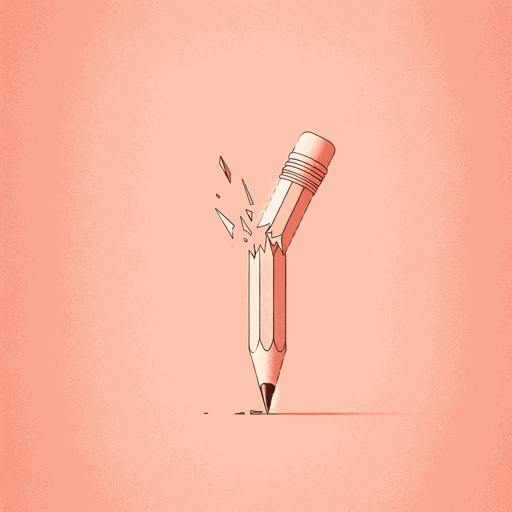
48 pages • 1 hour read
A modern alternative to SparkNotes and CliffsNotes, SuperSummary offers high-quality Study Guides with detailed chapter summaries and analysis of major themes, characters, and more.
Before You Read
Chapter Summaries & Analyses
Key Figures
Symbols & Motifs
Important Quotes
Essay Topics
Discussion Questions
Summary and Study Guide
Jonathan Kozol's 1991 book, Savage Inequalities , is a critical look at the American educational system and its failures. The main argument of the book is that a tremendous divide exists between rich and poor in education, a divide intensified by ethnic and racial prejudice. Kozol claims that in many communities and localities, American schools remain effectively segregated, more than fifty years after the criminalization of such practices. Kozol argues that while the letter of the law may prevent the explicit use of segregation, a combination of economic and social factors have in many ways replicated and even intensified the separation of communities in America. The result, Kozol illustrates, is a tiered system of education that prepares more affluent students for economic opportunity, while miring others in cycles of poverty and despair.
The first chapter of Savage Inequalities takes place in East St. Louis, Illinois an impoverished, predominantly-black city. Described as "the most distressed small city in America" by the U.S. Department of Housing and Urban Development, East St. Louis is beset with a host of economic issues, crime, and public health concerns. One of the many issues affecting East St. Louis is public health; Kozol focuses on this issue, as it illustrates many of the problems affecting similar communities. East St. Louis is in a basin between a series of chemical plants; sewage from the runoff from these plants seeps into the ground, collecting in the soil beneath nearby community playgrounds and schools. Kozol uses these circumstances to build a metaphor for American schools—crowded, polluted, and without hope. The argument is that the economic and social isolation of cities such as East St. Louis spills into the schools, like the sewage and pollution.
Get access to this full Study Guide and much more!
- 7,800+ In-Depth Study Guides
- 4,800+ Quick-Read Plot Summaries
- Downloadable PDFs
In his first formal study of different school systems, Kozol compares North Lawndale and Winnetka, neighborhoods in the greater Chicago area. In North Lawndale, the prospects for elementary students are grim; of a kindergarten class Kozol visits, it is projected that more students will go to prison than graduate school. The deficiencies of these schools, Kozol believes, are heightened by the system of "magnet schools," a program by which parents can compete to send children to better-performing schools. This system, in Kozol's view, detracts from the quality of an already-distressed school system, in favor of letting a privileged few "escape" it.
In addition to this, the curriculum for poorer schools in the area tends to emphasize "job skills" at the expense of formal, academic college preparation. The reasoning is that these students would benefit the most from job training. However, Kozol argues that this is based on an implicit belief that these students are less capable than their peers, and therefore deserve less attention and fewer resources. Schools in affluent Winnetka, Kozol notes, do not have to make these kinds of choices; the expectation is that Winnetka's students are prepared for whatever they might choose. In this manner, Kozol highlights how that this tiered system negatively affects black students, more than it does whites, effectively barring the former from many of the ladders of economic advancement.
The SuperSummary difference
- 8x more resources than SparkNotes and CliffsNotes combined
- Study Guides you won ' t find anywhere else
- 175 + new titles every month
The next logical step in this investigation is the idea of "competition," an important rhetorical and philosophical element of American life, and particularly in education. One of the main observations of Savage Inequalities is that the educational system in America gives unfair advantages and privileges to certain groups and communities, based on race and class. In light of this, Kozol argues that the competition is unfair. To support this larger argument, Kozol examines crumbling infrastructure and overcrowding in New York City schools as evidence of a larger pattern of unequal distribution of public resource. Kozol visits schools that are 50 percent or more overcrowded, schools without librarians, computer labs, or operable gymnasia.
Time and time again, schools whose student bodies are predominantly black and Hispanic have the worst facilities, and are the most overcrowded. Kozol cites a study by the New York Board of Education that finds no specific acts of racial prejudice responsible for these inequalities, yet he believes this is not sufficient: segregation, as Kozol will argue throughout Savage Inequalities , while no longer formally practiced by the school systems, remains an informal reality, perpetrated through the combined efforts of local politics, courts, and economic forces. Kozol argues that merely indifference for the fate of "other people's children," versus outright bigotry, is enough to create and sustain segregated environments.
While this hypothesis makes Kozol's argument more difficult to prove, this added nuance goes further to explain how segregation might persist in the modern day, decades after its criminalization. Kozol's trips to Camden, New Jersey offer an alternate explanation: like East St. Louis or North Lawndale, Camden suffers from major economic isolation and depression, both of which reduce the share of taxable value its citizens can recoup to fund schools, and hamper their ability to lobby successfully on their children's behalf. Kozol's point is that these non-academic arenas represent the real face of "competition" in America's schools—the ability to rig the game in one's favor. While the rhetoric of competition holds that the best and brightest achieve excellences and prevail, Kozol's investigation of both the widespread disparities in resources and funding brought about these circumstances illustrate a more sinister truth: the "winners" and "losers" of this game are chosen to occupy positions in different economic tiers. As always, students' race becomes a strong indicator of what resources will be available to them; Kozol argues that poor, nonwhite children consistently have the least, in terms of resources, and are effectively sabotaged in their ability to compete. Kozol strongly condemns this outcome, calling it a "caste system."
One important counterargument to these claims is such: although the educational system may not secure equal outcomes—it does not achieve "equity" in that sense—this is because of the myriad issues of select and specific communities, and principally, their "values." The argument goes that communities that prize education and advancement create space to achieve excellence, while communities that are otherwise cynical or demoralized do not, and will not. The crux of this argument is that merely increasing funding will not change these cultures' "values." Moreover, taking away funding from high-achieving schools will only hamper these high-achieving schools' ability to compete, without doing any good. Finally, attempts to redistribute school funds or "bus" students from one school to another only serve to weaken local school districts and place them under incompetent, overreaching state and federal authorities.
This argument, taken from an opinion piece in the Wall Street Journal , becomes the target of many of Kozol's rebuttals for the remainder of the book. Kozol's rebuttals take aim at how "culture" and "values" typically are defined in these defenses; specifically, Kozol takes issue with attempts to construe a single notion of "values" for entire an community or social group, the attempt to separate this notion of "values" from one's environment and real-life circumstances, and the attempt create ideas of intractable differences based on these constructs of culture. In all, Kozol argues that these counterarguments by similar conservative defenders of the status quo exist to excuse segregation. Kozol's argument is that the de facto segregation that persists in public education does so by the refusal of those in power to acknowledge it. While such events like the judgment of the New York City Board of Education may come to mind, the process is more subtle and local: insofar as white, affluent voters and citizens remain physically separated from poor and nonwhite citizens, it is easier for these white, affluent citizens to detach themselves from the latter's problems—in short, the physical division between communities creates a psychological and political division. The school system, in Kozol's view, is just one arena of this larger pattern of division: detachment from the fate of "other people's children" that engenders segregation in schools.
To counter these claims of community and parental indifference, the final chapter of Savage Inequalities focuses on a court case from 1968, involving a San Antonio resident named Demetrio Rodriguez , who headed a class-action lawsuit against the Texas Board of Education that claimed the material disparities in education in his community amounted to an unconstitutional violation of their children's rights.
The argument was that the state had failed to properly observe its responsibilities to provide education, and that the failure to do so had hurt their children's ability to exercise other, more "fundamental" rights, the First Amendment being among them. This was, of course, in addition to any lost economic opportunity they might have otherwise had. The reaction to this court case was mixed: the case was upheld in 1971 by a district court, then overturned in 1973 by the Supreme Court. The ruling of the Supreme Court was that students did not have a right to essentially "equal" education, nor even to an education that would allow them the fullest exercise of other rights. Instead, the Court ruled that it was the only obligation of the State to provide a "minimum" level of education, with that minimum left to be defined by local authorities (and of course, market forces).
Initially, this was a blow to the reform movement. However, in 1989, this ruling was overturned, owing to the manifest disparities in education quality. Proponents of aggressive education reform were overjoyed, until the resistance to redistribution and bussing intensified: in places like California and Texas, voters rejected tax increases to fix the disparities in education highlighted by the courts. The movement became at times a local struggle, yet one dotted with state and federal interventions. Although great strides have been made, the inequalities persist, aided as much by the desire to get ahead at all costs as indifference to the fate of others. The book closes on a note of frustration, imploring that within the wealth and bounty of America, surely there must be enough for each and every child.

Don't Miss Out!
Access Study Guide Now
Related Titles
By Jonathan Kozol

Death at an Early Age
Jonathan Kozol

Fire in the Ashes
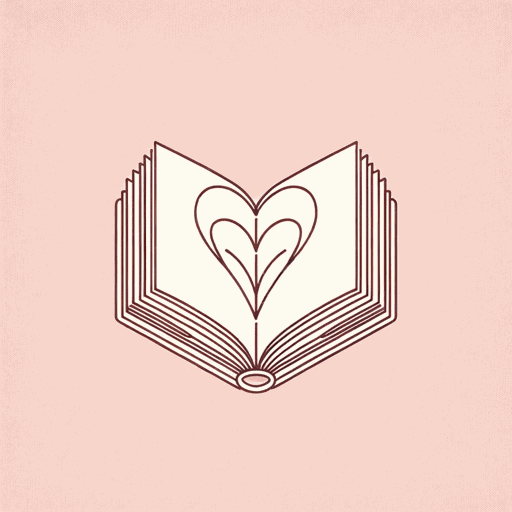
Letters to a Young Teacher
Rachel and Her Children: Homeless Families in America

The Shame of the Nation: The Restoration of Apartheid Schooling in America
Featured Collections
Audio Study Guides
View Collection
The Savage Detectives Themes
By roberto bolano.
These notes were contributed by members of the GradeSaver community. We are thankful for their contributions and encourage you to make your own.
Written by people who wish to remain anonymous
The Visceral Realists are inherently a youth poetry movement, that relies on the power of young intellectuals to keep itself alive. Though Lima and Belano are the founding members, the survival of the group depends on recruiting younger members who have the energy to spread their love for poetry. It is also important to note that the youth are the most important people for progressing the arts as they are the future leaders of the world. Having a profound respect for the arts and for literature is inherent to the success of society as a whole.
Forms of intellect
Juan considers himself to be a intellectual, and though he does not pursue the traditional form of education through university, this does not make him any less intelligent. However, he seems to think that because he has a vast knowledge of literature, this puts him in a prominent position over normal people. Indeed, when he challenges Belano and Lima to a game of knowledge, he is instead outwitted by Lume who quizzes him on slang words. Intellect is therefore not only restricted to those with formal education.
Update this section!
You can help us out by revising, improving and updating this section.
After you claim a section you’ll have 24 hours to send in a draft. An editor will review the submission and either publish your submission or provide feedback.

The Savage Detectives Questions and Answers
The Question and Answer section for The Savage Detectives is a great resource to ask questions, find answers, and discuss the novel.
Study Guide for The Savage Detectives
The Savage Detectives study guide contains a biography of Roberto Bolano, literature essays, quiz questions, major themes, characters, and a full summary and analysis.
- About The Savage Detectives
- The Savage Detectives Summary
- Character List
![homework read and analyze savage biography [frontispiece]](https://www.eighteenthcenturypoetry.org/images/authors/colour-portraits/banner-frontispiece.jpg)
Browse facsimiles and transcriptions in the Digital Library
![homework read and analyze savage biography [section of text]](https://www.eighteenthcenturypoetry.org/images/screenshots/ECPA-snippet5.jpg)
Close read poems with a range of analysis tools
![homework read and analyze savage biography [poet writing]](https://www.eighteenthcenturypoetry.org/images/authors/colour-portraits/banner-poet.jpg)
Collaborate by contributing notes and suggestions
Richard Savage
Works in ecpa.
alphabetical listing / listing in source editions
- DENNIS to Mr. THOMSON, Who had procured him a Benefit Night. ( )
- DENNIS to Mr. THOMSON, Who had procured him a Benefit Night.
Source editions
- Dodsley, Robert, 1703-1764. A Collection of Poems in Six Volumes. By Several Hands. Vol. IV. London: printed by J. Hughs, for R. and J. Dodsley, 1763 [1st ed. 1758]. 6v.: music; 8⁰. (ESTC T131163 ; OTA K104099.004 )
Bibliography
DMI 2122 ; ODNB 24724 ; NCBEL 565; DLB 95
- Tracy, Clarence, ed. The Poetical Works of Richard Savage . Cambridge : Cambridge UP , 1962 . Print.
- Tracy, Clarence, ed. Samuel Johnson, An Account of the Life of Mr. Richard Savage . Oxford: Clarendon Press, 1971. Print.
- The Works of the English Poets, from Chaucer to Cowper; including the Series Edited, with Prefaces, Biographical and Critical, by Dr Samuel Johnson: and the most approved translations . The Additional Lives by Alexander Chalmers, F.S.A. Vol. XI. London : J. Johnson et al. , 1810 . 241-342. Google Books edition. Web. 24 Feb. 2012. https://books.google.co.uk/books?id=RfZLAAAAcAAJ&pg=PA241
- Holmes, Richard. Dr. Johnson and Mr. Savage . London: Hodder, 1993. Print.
- Tracy, Clarence. The Artificial Bastard. A Bibliography of Richard Savage . Toronto: University Press, 1953. Print.
Reference works
- Baines, Paul, Julian Ferraro, Pat Rogers, eds. The Wiley-Blackwell Encyclopedia of Eighteenth-Century Writers and Writing, 1660-1789 . Malden, MA : Wiley-Blackwell , 2011 . 299-301. Print.
- Fairer, David. English Poetry of the Eighteenth Century 1700-1789 . Longman Literature in English Series. Harlow : Longman , 2003 . 284. Print.
- Johnson, Sarah. Savage, Richard, d. 1743 . Literature Online biography. Cambridge: Chadwyck-Healey, 2006. Web. 21 Feb. 2016. http://gateway.proquest.com/openurl?ctx_ver=Z39.88-2003&xri:pqil:res_ver=0.2&res_id=xri:lion&rft_id=xri:lion:ft:ref:BIO001871:0
- Radcliffe, David H., ed. Richard Savage (1697 ca.-1743) . Spenser and the Tradition: ENGLISH POETRY 1579-1830 . Center for Applied Technologies in the Humanities, Virginia Tech , 2006 . Web. 11 Nov. 2011. https://web.archive.org/web/20170908014740/http://spenserians.cath.vt.edu/AuthorRecord.php?recordid=32989 .
- Suarez, Michael F. Savage, Richard . A Collection of Poems by Several Hands [ 1782 ] . Ed. Robert Dodsley and Michael F. Suarez. Vol. I. London : Routledge/Thoemmes , 1997 . 202. Print. 6 volumes.
- Dussinger, John A. 'The solemn magnificence of a stupendous ruin': Richard Savage, Poet Manque . Nath, Prem, ed. Fresh Reflections on Samuel Johnson: Essays in Criticism . Troy: Whitston Publishing Company, 1987. 167-182. Print.
- Edwards, Gavin. The Illegitimation of Richard Savage . Sydney Studies in English 17 (1991-2): 67-74. Print.

IMAGES
VIDEO
COMMENTS
4. Homework. A. Build Background Knowledge: Read and Analyze Savage Biography. Students read Augusta Savage's biography and answer questions to build background knowledge of the artist and the context of the Harlem Renaissance. B. Independent Research Reading: Students read for at least 20 minutes in their independent research reading text.
A. Build Background Knowledge: Read and Analyze Savage Biography. Students read Augusta Savage's biography and answer questions to build background knowledge of the artist and the context of the Harlem Renaissance. B. Independent Research Reading: Students read for at least 20 minutes in their independent research reading text.
Birth Year: 1892. Birth date: February 29, 1892. Birth State: Florida. Birth City: Green Cove Springs. Birth Country: United States. Gender: Female. Best Known For: Sculptor Augusta Savage was one ...
The Harlem Renaissance Grade 7: Module 3: Unit 1 Homework Resources (for Families) Homework: Read and Analyze Savage Biography Name: Date: Directions: Read the Augusta Savage biography in the Harlem Renaissance packet, and respond to the selected response questions, then write one complete paragraph to answer the constructed response questions.
The Harlem Renaissance Grade 7: Module 3: Unit 1 Homework Resources (for Families) Homework: Read and Analyze Savage Biography (Answers for Teacher Reference) Directions:Read the Augusta Savage biography in the Harlem Renaissance packet, and respond to the selected response questions, then write one complete paragraph to answer the constructed ...
Title: -Rambler Author: -Samuel Johnson Speaker: -The Narrator (SJ) Location: -Opening paragraphs, Rambler 60 Analysis: -Talks about how to write a biography-We tend to sympathize with people who are like us-literature should be both entertaining and morally improving, so it is perhaps more useful for people to read about the lives of ordinary people than it is to read about the lives of kings ...
Devices to access the internet: To enable students to listen to or view audio, video, and artwork collections. Analyze and present music, visual, and performance art. Laminators and computers: To make professional museum signage. Create signs for the performance task museum. Devices to record presentations: T o enable teachers and students to review presentations for formative and summative ...
Find This Book. ISBN 9781600603327. Purchase on Bookshop Purchase on Amazon. Augusta Savage was a born artist, making clay figures even as a child. She pursued her passion, actually earning money for her family until she was old enough to travel from her rural Florida home to New York City where she studied at Cooper Union and became part of ...
Explore the remarkable journey of Augusta Savage, a trailblazing sculptor during the Harlem Renaissance. From overcoming adversity in her youth to establishing the Savage Studio of Arts and Crafts in Harlem, Savage's legacy is one of artistic brilliance and advocacy for Black artists. Delve into her...
John (the Savage) Character Analysis. John is born to a woman from the World State, Linda, who gets stranded in a Savage Reservation in New Mexico. His father is the Director. He spends the first 20 years of his life on the Reservation, and though the Reservation natives treat him as an outsider, he still picks up their religious and moral ...
This biography graphic organizer is a perfect way to ensure your students are keeping their information organized and focusing on the most important aspects of the person they're studying. This activity is great for biography projects and can easily serve as a note-taking tool for an essay or presentation.
70. 7 Key Reading Skills to Support Biographies. I hope you've been enjoying this month's biography theme. The last two episodes I gave tips for introducing biographies to your students and tips for using mentor texts. At this point your students should be familiar with the genre, which leads me to today's episode.
The Life of Mr Richard Savage was the first important book by a then-unknown Grub Street hack, Samuel Johnson. Richard Savage (1697—1743) was a poet, playwright, and satirist who claimed to be the illegitimate son of a late earl and to have been denied his inheritance and viciously persecuted by his mother. He was urbane, charming, a ...
Biography . I am Dean of the Faculty of Education at York University. From 2017-2021 I was Professor and Head of the Department of Psychology and Human Development at University College London. ... A systematic review and meta-analysis. ... Scientific Studies of Reading, 24, 321-337. Savage, R. S. (2020). The Simple View of Reading: A ...
They study materials such as diaries, personal letters, oral histories and autobiographies. The most accurate biographies are based on historical evidence. But some biographers are less thorough and careful in their research and may not use the best source materials. Also, the book may be fictionalized, or partly made up.
21 Savage. (Rapper) Shayaa Bin Abraham-Joseph, famous as 21 Savage and the Slaughter King, is a rapper and songwriter of British origin. A popular teen icon today, he is admired not just for his musical skills, but also for his incredible rise to name and fame from being a petty criminal on the streets. He started dealing in drugs when he was ...
Originally published in 1991, Savage Inequalities remains a powerful and relevant critique of the American educational system. Its impact has extended beyond academia, influencing public discourse and policy debates on educational inequalities. Kozol's work has inspired educators, activists, and policymakers to confront the harsh realities of ...
Jonathan Kozol's 1991 book, Savage Inequalities, is a critical look at the American educational system and its failures. The main argument of the book is that a tremendous divide exists between rich and poor in education, a divide intensified by ethnic and racial prejudice. Kozol claims that in many communities and localities, American schools ...
Shéyaa Bin Abraham-Joseph (born October 22, 1992), known professionally as 21 Savage, is a British rapper currently based in the United States. [1] [2] Born in London and raised in Atlanta, Georgia, [3] he began his recording career in 2013 and released three independent mixtapes to regional acclaim. His breakout project—the collaborative ...
The Savage Detectives study guide contains a biography of Roberto Bolano, literature essays, quiz questions, major themes, characters, and a full summary and analysis. The The Savage Detectives Community Note includes chapter-by-chapter summary and analysis, character list, theme list, historical context, author biography and quizzes written by ...
5 Bolaño's tendency to confound the relationship between fiction and nonfiction by appealing to readers'—and critics'—proclivity toward biographical readings of literature has become more ironic since his death, as attempts are made to decipher the connections between his novels and his life. A recent exhibit of Bolaño's archive at the Centre de Cultura Contemporànea de Barcelona, which ...
Reading; Analysis; Visualization; Modelling; Browse facsimiles and transcriptions in the Digital Library. Close read poems with a range of analysis tools. Collaborate by contributing notes and suggestions. Previous Next. Richard Savage (c. 1697 - 1 August 1743) Works in ECPA ... Savage, Richard, d. 1743. Literature Online biography. Cambridge ...
A biography is a story of a person's life written by someone other than the story's subject. An autobiography is a story written by the subject of the story. Autobiographies are more authentic ...